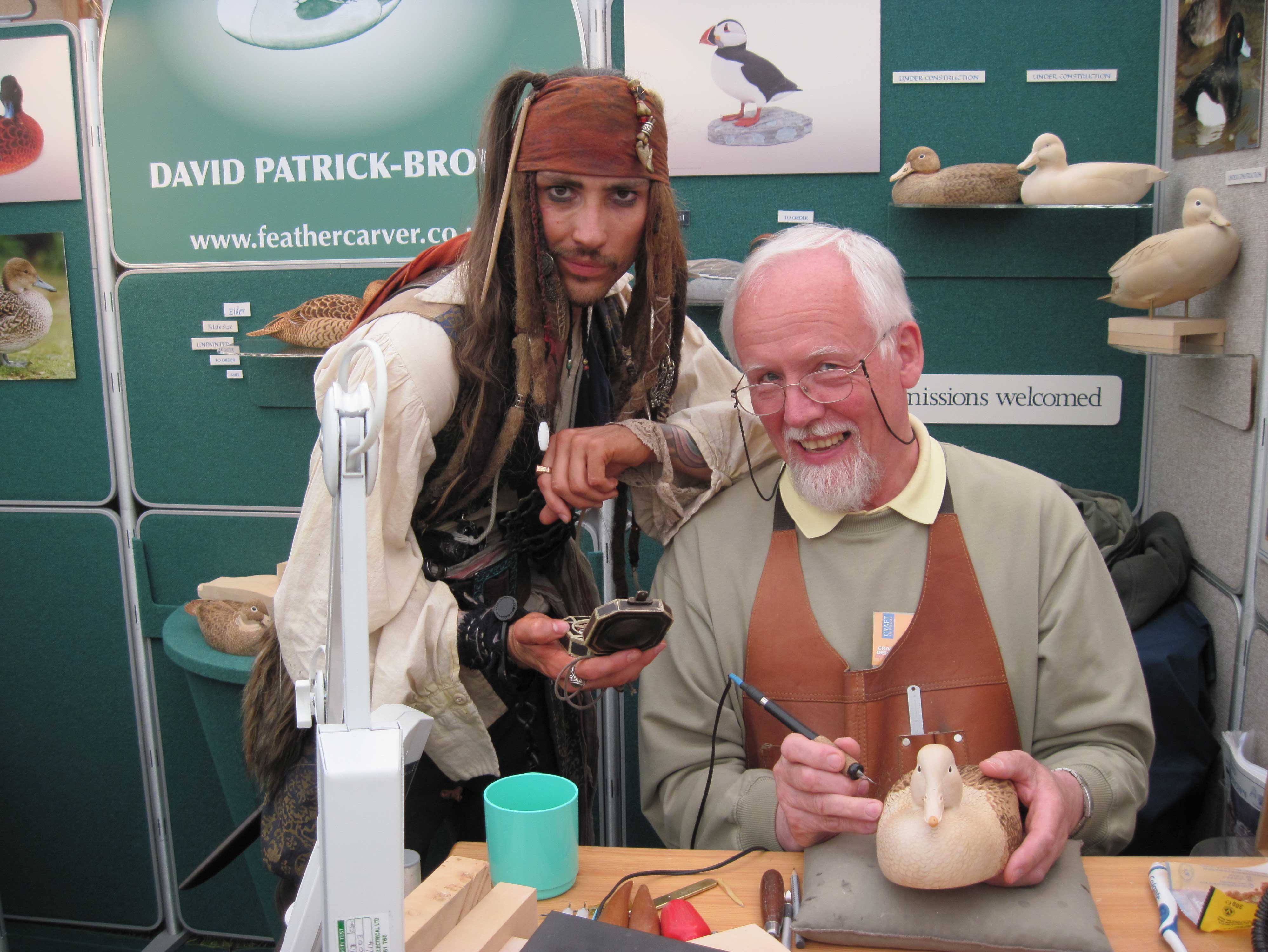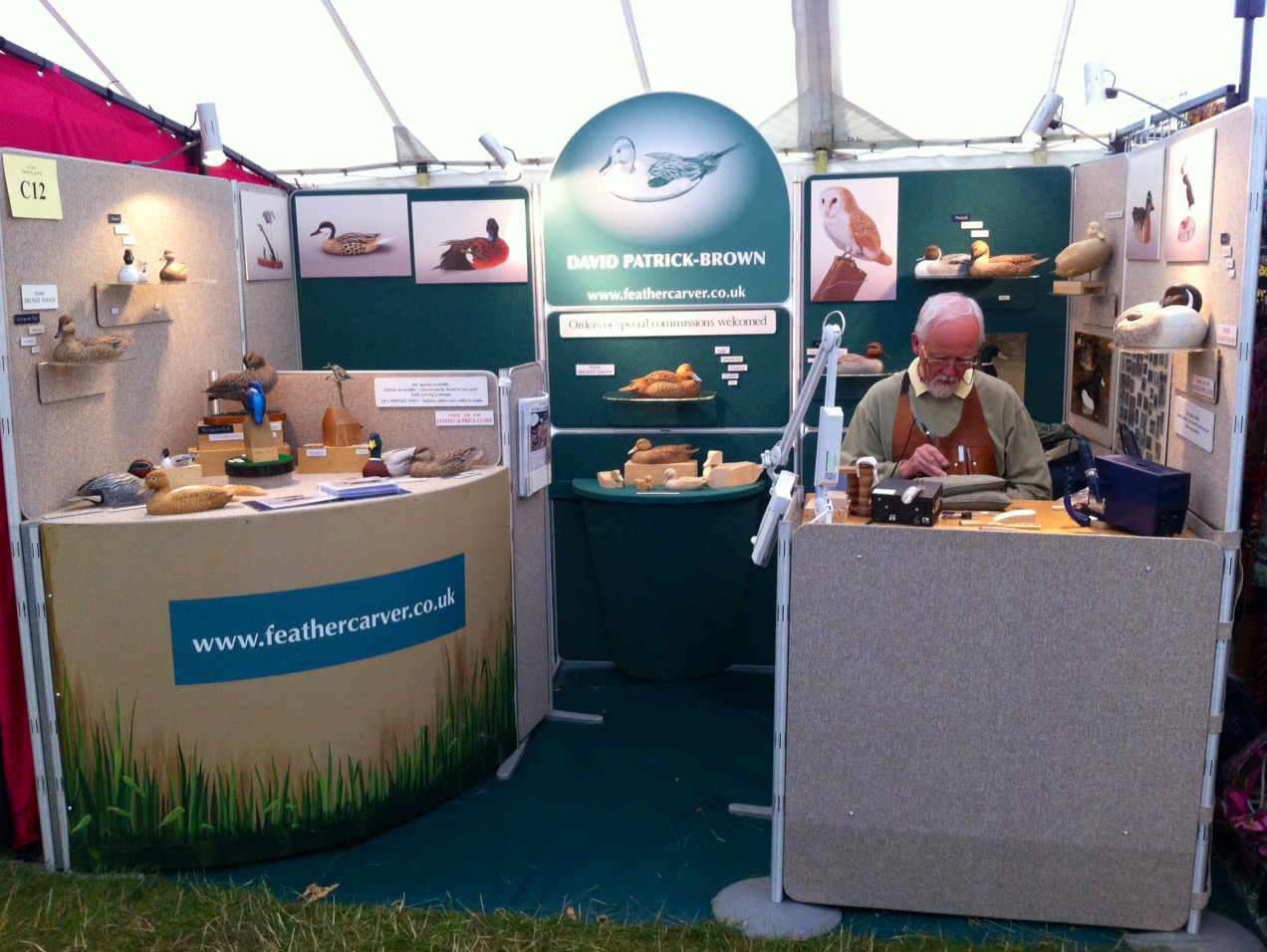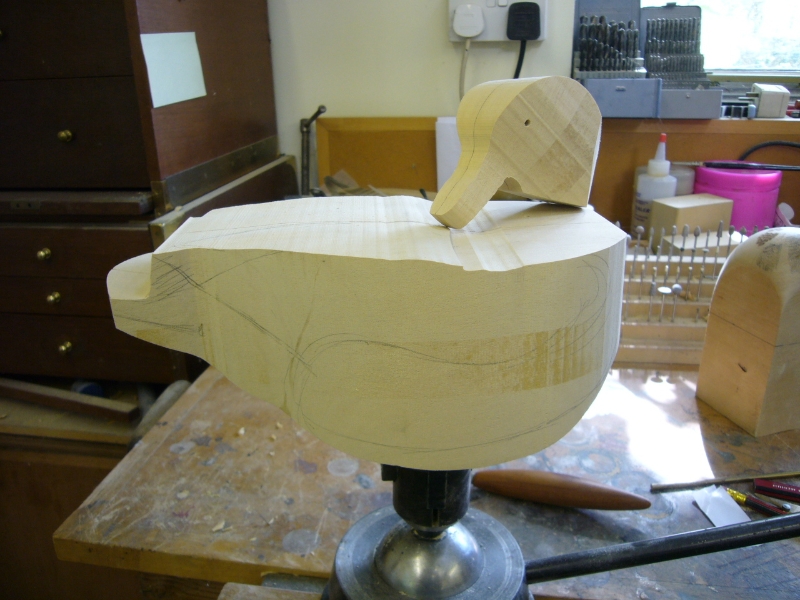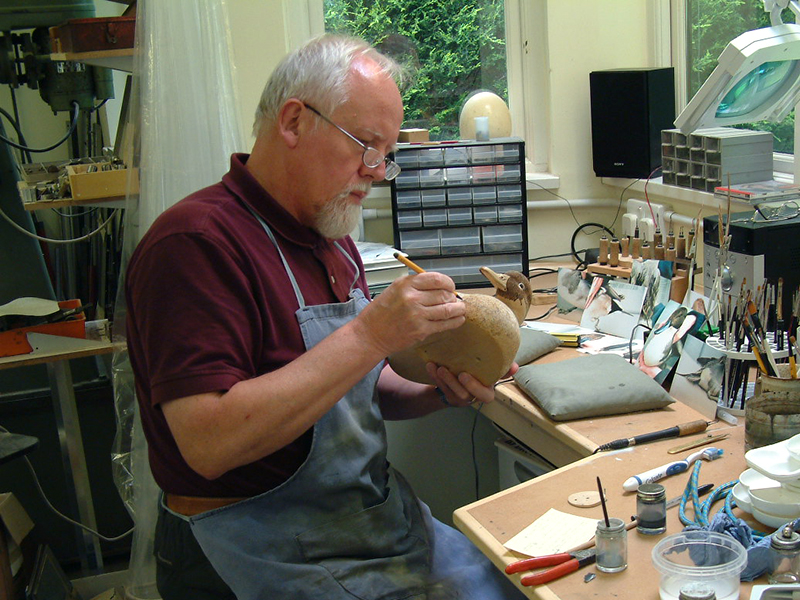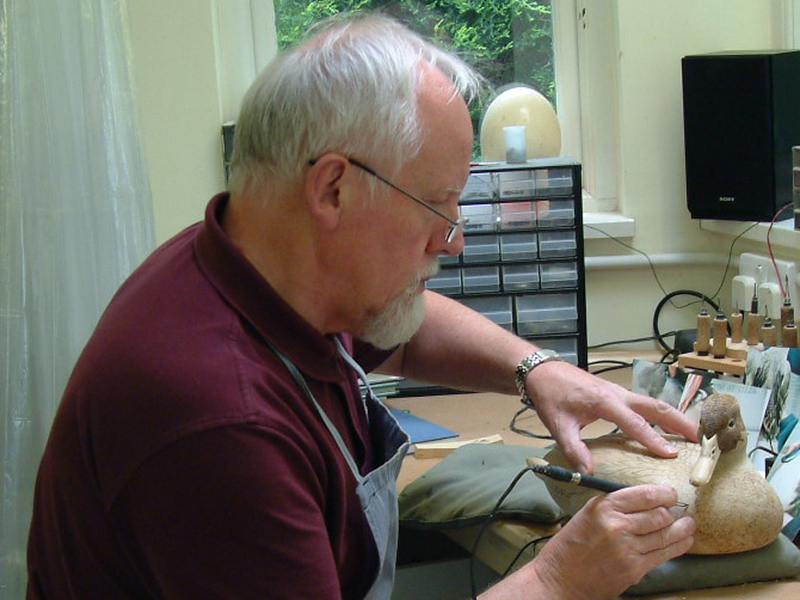My aim when making a bird is to achieve as realistic a carving as possible, with as much detail as the wood can accept, and to paint it in as lifelike a manner as possible. The pose is all important and often takes considerable thinking time to get right. Capturing the ‘Jizz’ of the bird means that size, proportion, shape and colouring must all be right if I am to have any chance of success.
I carry out a good deal of research on all my birds, but especially so if the carving is the first time I have attempted that species. I spend time observing the birds in the wild, so the morning dogwalk across the fields sometimes becomes doubly useful, and studying photographs. I very occasionally use taxidermy mounts for reference, but these must be used with caution due to sometimes poor feather placement.
The wood I use in most cases is Jelutong (Dyera costulata, the rubber tree, cut down when too old to produce latex). I select the rough-sawn planks myself in the timberyard then process them in my workshop. For many birds, especially songbirds, I use Lime, usually English, and air-dried. This means that quite a few carvings come from wood that I have had for twenty years or more. As well as ease of carving, I need the wood to have strength and durability for seemingly delicate separate featherwork. Occasionally Tupelo or Sugar Pine have the preferred qualities for a particular requirement.
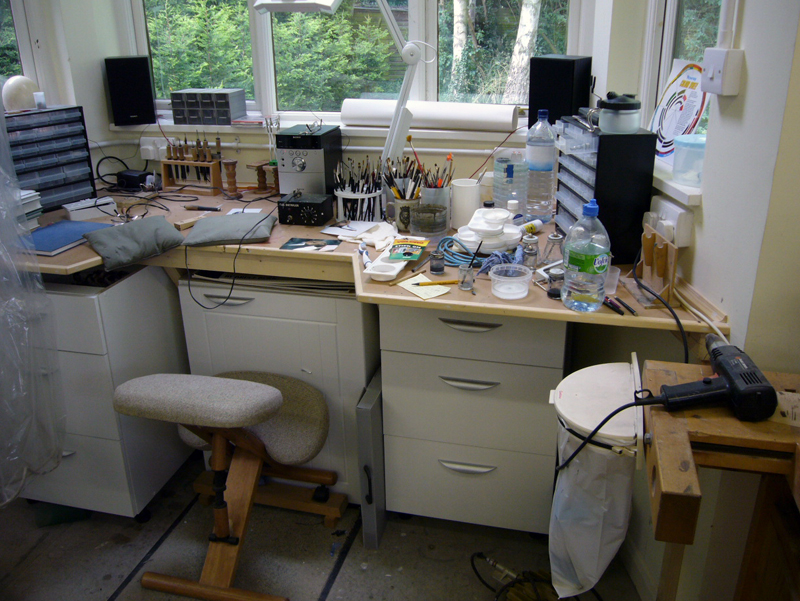
Texturing and painting area
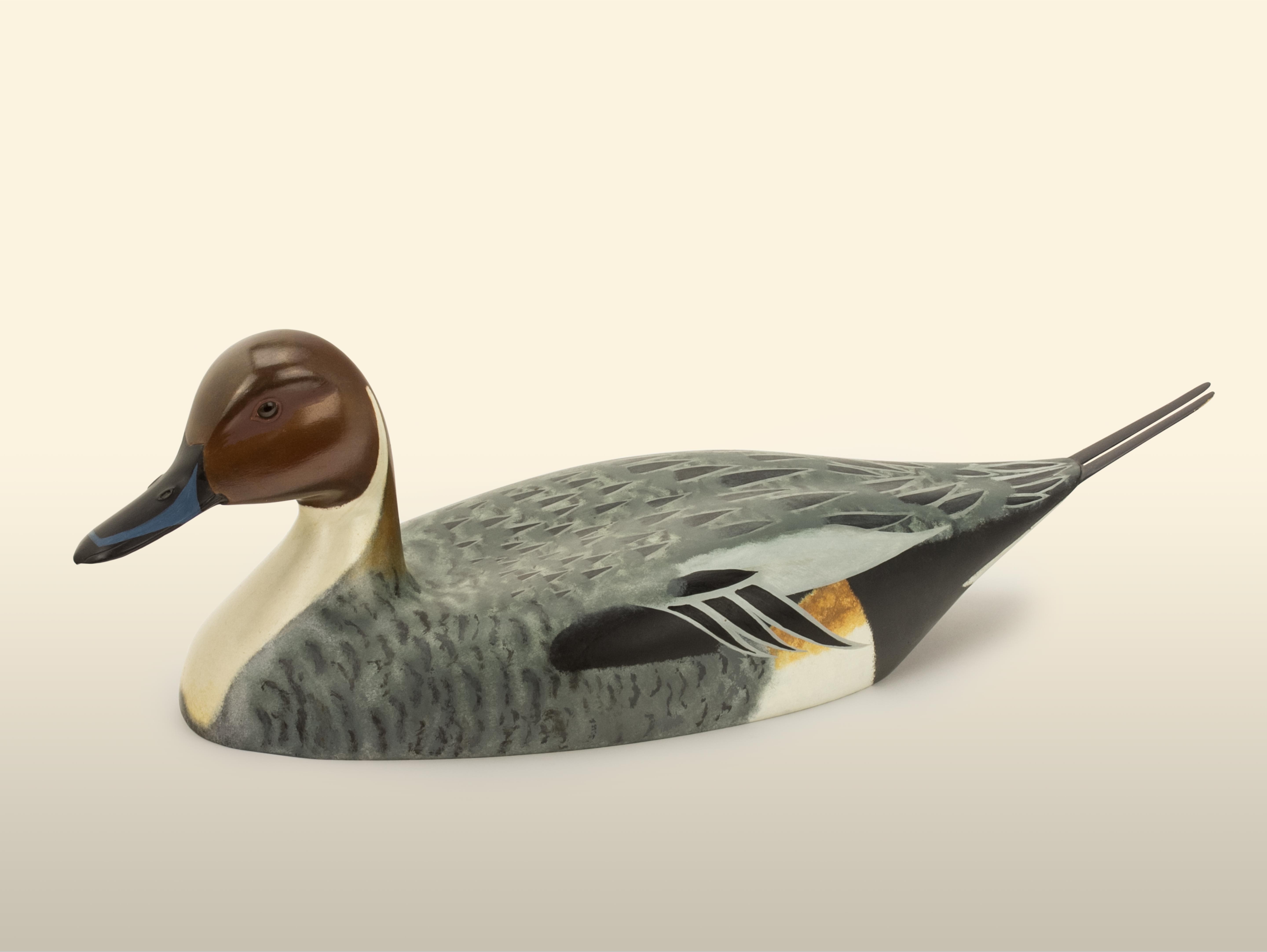
My first carving
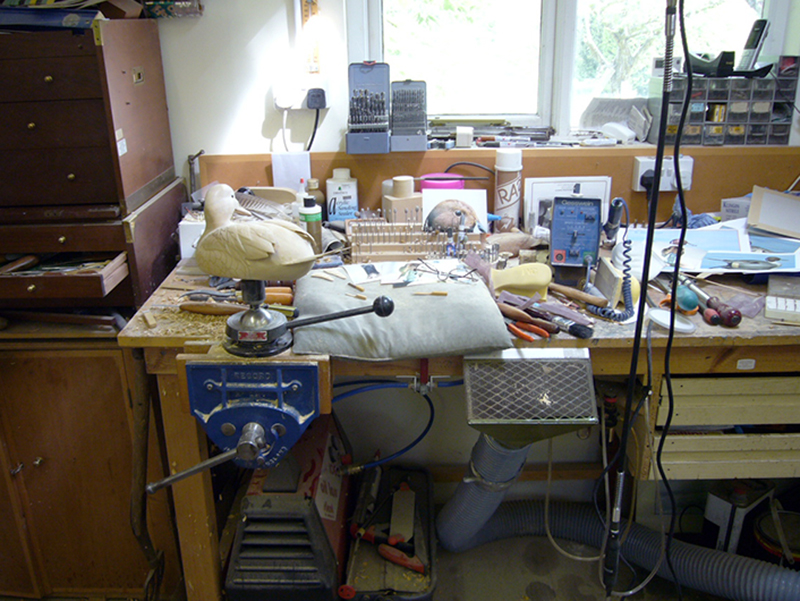
Carving area
I began carving in about 1985, having been a patternmaker and modelmaker. I had idly picked up a book of decoy patterns from the remaindered pile in my local WH Smith. The drawings were very simple, no texturing or separate feathers, and they weren’t even shown with glass eyes. I liked the shapes of the Pintail drake so I found a suitably sized piece of wood (it happened to be Jelutong, but could just as easily have been pine) and set to work.
The carving part was quite easy as the bird was so simple, but when I came to paint it I was stumped, completely at sea, how could anyone deal with so many feathers? As you can see from the centre photo above, I only managed a token representation.
What I eventually did was to accept that carving and painting birds was a great deal harder than I had originally thought, and would require the application of patience (in large amounts) and learning (in even greater amounts). To this day, I learn from each bird carved and especially from each new species that I am commissioned to produce.
So around 1989 I carved my second bird, a smooth Widgeon drake which is still unfinished as I then discovered the means used to apply texture to a carving. Suddenly I had a method of delineating the main feather groups of the bird, which greatly simplified and ordered the painting process. Of course I did not invent this method; like all carvers I learned by reading and from observing and speaking to others who were also intoxicated by this new ability to add realism to our birds.
My first textured and painted bird was a Teal drake, produced in July 1990 and the first carving that I sold, at Ardingly in April 1991. To my regret I did not take a note of the buyer’s name, nor did I photograph the bird – a lesson learned. During the course of the next five years I carved many different species. All were carved to commission, and many can be seen on the Gallery page. I returned to full time carving in early 2011 and have created around 270 birds so far.
The paints I use are lightfast acrylics, either by Winsor and Newton or more recently Jo Sonja. I use the W & N colours if I need thin washes and the Sonja paints for solid colours. All my birds are carefully varnished to give just a hint of a sheen, and this, together with the sealing of the textured carving before painting, gives a very durable and long-lasting finish.
We all grow up knowing that feathers are soft; we know this from stroking a bird, such as an owl say, at a country or craft show as a child. We also know from an early age that wood is hard, so carving and painting birds is actually an exercise in deception, convincing the onlooker that what they know to be hard is soft. This skill is at the root of what I do; the extent to which I possess it is reflected in my carvings, and I leave for others to judge.
I work almost exclusively to commission due to the length of time it takes to produce a carving; please refer to my Commissions page if you would like information about the process.
